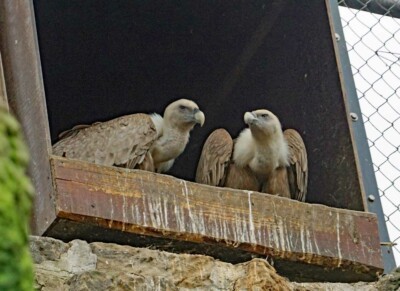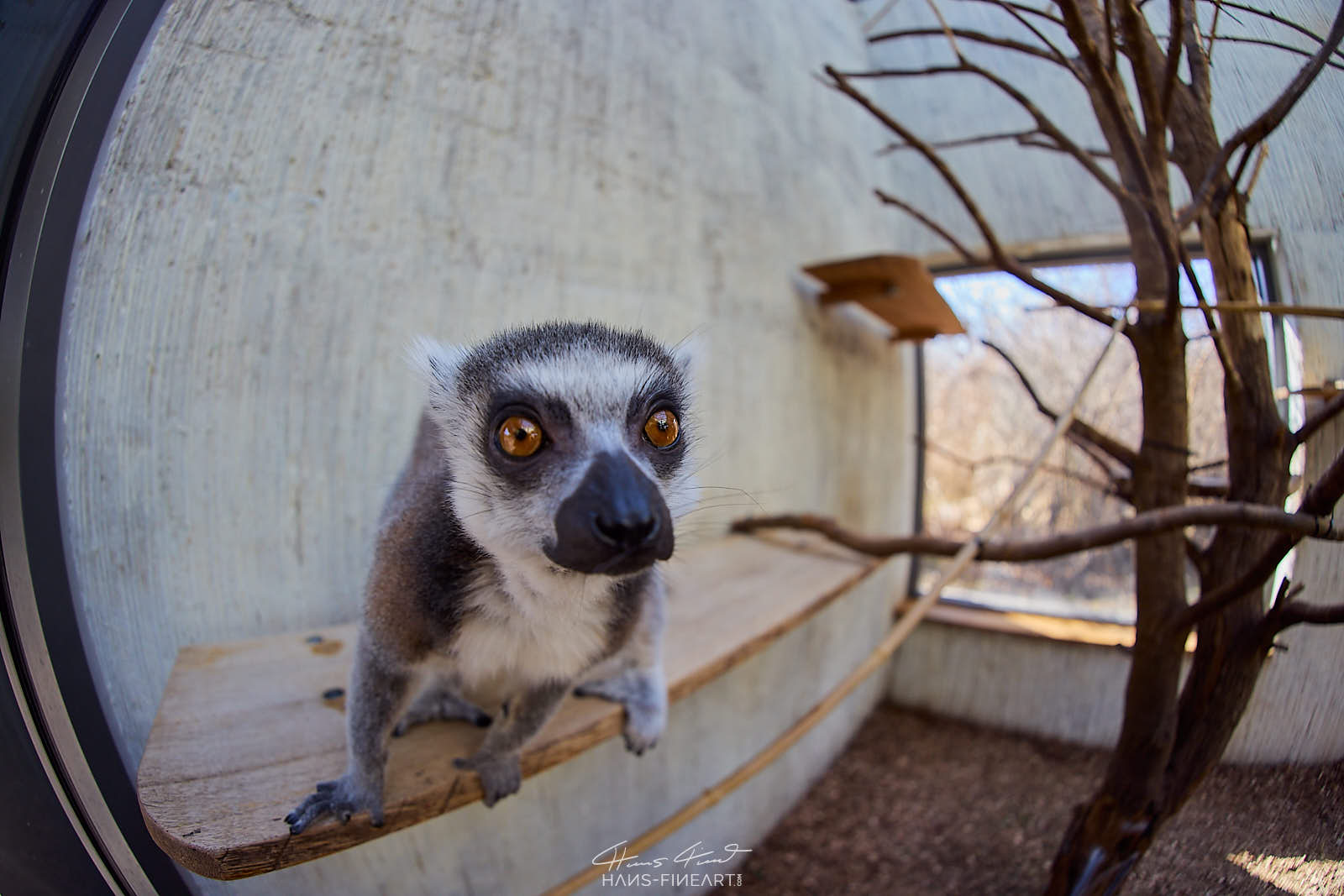BREEDING SEASON FOR THE GRIFFON VULTURES
Campaigns | 4 February 2022

While most birds only start breeding in spring, our vultures in the large aviary were way ahead of the game back in January. At the start of the year, keepers offered the birds nibbled-off greens, twigs and camel wool as nesting materials. All four griffon vulture pairs seemed very interested and got busy nest-building a few days later. While our established breeding pair moved back into their usual breeding box 1, a second pair has built a nest high up on the roof of another box, thus giving visitors a good view.
It remains to be seen whether the Egyptian vultures, the other species residing in the aviary, will lay any eggs this year. One pair is still very young, while the other, older pair has not yet managed to rear any fledglings. Our keepers are now keeping a close eye on the breeding boxes, approaching with great care so as not to disturb the breeding process. A single griffon vulture egg has been spotted in each of the two boxes, so hopefully we will see healthy baby birds hatching in March or April. Our goal once again this year is to send young birds to field projects to help the European griffon vulture population recover in its natural habitat. The young griffon vultures that hatched in 2020 and 2021 were released into the wild on Monte Minerva in Sardinia in November 2021.
+ + + Good to know + + +
You can read about the success of the reintroduction programme on the website of our partner in this project, the Vulture Conservation Foundation (VCF). According to the VCF, the number of griffon vultures in Sardinia increased from 130 birds in 2013 to over 240 in 2020. It’s a success story that Dresden Zoo is proud to have been a small part of. More Informations about the project: https://4vultures.org/…/griffon-vulture-restocking…/…
